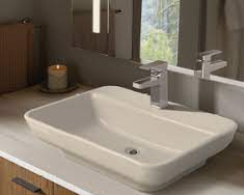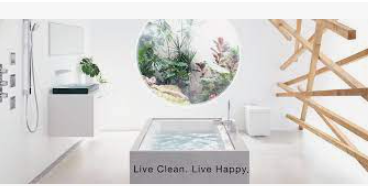Mastering Shower Valves: A Guide to Comfort, Control, and Compatibility
Introduction
A valve is the core of any shower or bathing system setup. It is vital to the whole system because it controls the temperature and pressure of the water flowing to the shower head, bathtub spout, handheld shower, or any other configuration. Regardless of whether a bathing setup is being remodelled or a whole bathroom is being built, a valve, and for the purposes of this article, a shower valve, like a Kohler bathroom shower valve, is a foundational element of such projects because it makes the showering system functional. Buying one, however, can be tricky due to the varieties of shower valves from a multitude of brands in the market, offering different features and perks. Making the right choice can seem like a daunting task. This article aims to remove that fog of doubt, and streamline this process for prospective buyers.
Types of Shower Valves
1.Manual Valves
These are the baseline for all valves, featuring either a single knob or two handles, one for hot and the other for cold water. Manual valves are simple, straightforward, and reliable, lacking advanced temperature and pressure control mechanisms. Since they only control the mix of hot and cold water, these valves work well in smaller bathrooms, and homes with stable water temperature and pressure.

2. Thermostatic Shower Valves
Designed to ensure a steady water temperature regardless of shifts in water pressure, these systems feature a thermostat that continuously tracks the temperature and balances hot and cold water to keep it consistent. This reduces abrupt temperature changes, providing a more comfortable shower experience and safeguarding individuals more sensitive to temperature variations, such as young children and older adults.

3. Pressure-Balancing Valves
Similar in function to thermostatic valves, pressure-balancing valves use a diaphragm piston to keep an even water temperature despite pressure fluctuations. The difference is that because they don’t have a built-in thermostat, they can only stabilise temperature to a certain extent, and not as precisely. Still, they are a great affordable option for homes that see frequent water pressure changes.
4. Diverter Valves
Diverter valves, like those from Kohler, are designed to control water flow direction, switching between the shower head, a shower mixer valve, or a Kohler shower faucet. Commonly used in dual-shower systems or setups with additional outlets, these are a fundamental component of any flexible and versatile shower system. Diverter valves come in three types:
- a. Tee Diverter: Water is diverted from the shower faucet to the shower head using a pull arm once the water reaches the desired temperature.
- b. Two-Valve Diverter: This valve has two knobs, a rotating one that controls hot and cold water, and the other that switches flow between the shower head and other outlets.
- c. Three-Valve Outlet: This valve has three knobs, two that control hot and cold water each, and the third one that switches water flow between the shower head to any other outlets attached to the setup.
Make a habit of checking for sediment build-up or erosion in the valve a couple of times a year to steer clear of an avoidable shower handle replacement.

5. Thermostatic-Diverter Combination Valves
Certain advanced systems combine thermostatic and diverter features into a single valve that can control water temperature and flow direction from the same unit. They are a convenient option for complex shower setups requiring both functionalities, but are quite expensive compared to other valves, and as such, are found predominantly in luxury bathrooms.

6. Digital Valves
Innovations in modern technology and its integration into shower valves has opened the door to highly customisable shower experiences. A digital interface, either a touchscreen panel or an app, gives precise control over temperature and pressure. The convenience is amplified by certain models that also include features like warm-up settings, pause functions and even pre-set shower profiles. Their nature makes digital valves very expensive, and they require professional installation, making them more suitable for high-end bathrooms.

Choosing the Right Shower Valve
Picking the correct shower valve for any shower system is essential for a reliable experience with balanced flow and temperature. There are a multitude of options available depending on users’ needs. Consider installation style, plumbing compatibility and material durability to find a valve that meets both functional and aesthetic needs. This will help avoid a shower faucet replacement too soon.
1.Understand Valve Types for Functionality
- Pressure-Balancing Valves: These valves balance hot and cold water pressure, maintaining a consistent temperature despite fluctuations from other water usage, such as flushing a toilet or using a sink. They are especially useful in homes where sudden temperature changes can be uncomfortable and even harmful in some cases.
- Thermostatic Valves: These allow users to set a specific temperature that remains steady, adjusting automatically to maintain this set point. This prevents scalding or unexpected cold surges, making them ideal for homes with children or elderly members.
2.Consider Installation Type for Style and Maintenance
- Concealed Valves: Positioned behind the wall, concealed valves offer a sleek, modern appearance for hiding pipes and fixtures. They will require more intensive installation, but result in a cleaner streamlined look.
- Exposed Valves: These are mounted directly to the wall, making them easier to install and maintain. They can be an aesthetic choice for industrial, minimalist or traditional bathroom styles where visible hardware complements the decor.
3.Check Plumbing Compatibility and Flow Rate for Performance
- Plumbing Compatibility: The chosen valve news to match the home’s plumbing configuration to avoid compatibility issues. Different valve types may require specific plumbing setups, so it is best to consult a plumber in case of uncertainty.
- Flow Rate: Especially important for homes with low water pressure, a valve that allows efficient flow rate should be chosen. Flow rate is typically measured in gallons per minute (GPM). Some valves are designed to enhance flow even at lower pressure rates, ensuring a satisfying showering experience.
4.Choose Durable Materials for Longevity
The best materials to opt for are brass or stainless steel, as they resist corrosion and are highly durable under prolonged use. Cheaper materials can degrade or corrode quickly causing leaks and requiring a shower valve replacement sooner than higher quality ones, and therefore, should be avoided.
5.Opt for Reputable Brands and Warranties for Reliability
Selecting a valve from a trusted brand like Kohler Africa with a comprehensive warranty provides confidence in the product’s reliability. A good warranty often covers manufacturing defects and can offer long-term support, ensuring that the valve remains in excellent working condition over time. Brands known for their quality are more likely to provide durable components and responsive customer support.
Conclusion
In conclusion, choosing the right valve is essential for a comfortable bathing experience. Buyers should consider the type of valve, be it manual, thermostatic, or digital, along with installation style, plumbing compatibility, flow rate, and material durability. By identifying their specific needs and opting for reputable brands, like the Kohler shower valve, with solid warranties, homeowners can confidently select a valve that enhances their shower experience and ensures reliability. With the right information, the process becomes straightforward, leading to a smooth addition to any bathroom project.
FAQ
Q1. How does a Kohler shower valve work?
A Kohler shower valve balances hot and cold water to control temperature and pressure, ensuring a comfortable shower. Advanced models may offer digital customization.
Q2. How do you adjust a Kohler shower mixing valve?
Adjust by turning the handles to regulate hot and cold water. Thermostatic valves let you set a stable temperature. Refer to the manual or a plumber if needed.
Q3. How do I know what model Kohler shower valve I have?
Check for model numbers on the valve, handle, or in the manual. You can also contact Kohler support or a plumber for help.
Q4. How to identify your shower valve?
Look for brand names or model numbers on the valve or handle. Check the manual, or consult a plumber if needed.
Q5. Can I replace a shower valve myself?
DIY replacement is possible with plumbing knowledge, but for concealed or complex setups, hiring a plumber is recommended.






